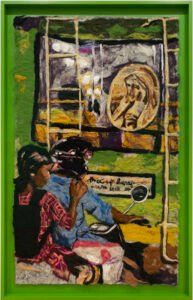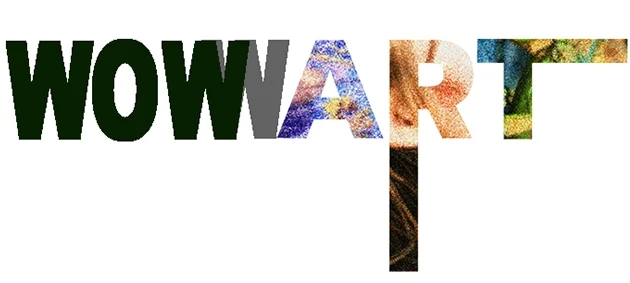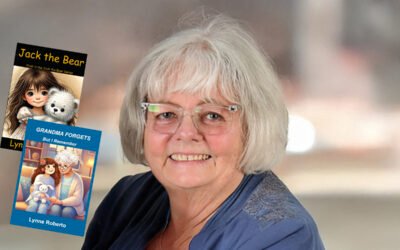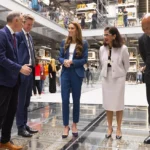Melissa Joseph Transforms Memory, Identity, And Materials Into Timeless Works Of Art

Photo: Melissa Joseph in her studio, surrounded by the rich textures, materials, and stories that define her remarkable creations.
Exploring the Power of Storytelling Through Textiles
Melissa Joseph’s art blends personal memory, diasporic identity, and textiles, creating deeply relatable works that celebrate connection, community, and storytelling through innovative materials and thoughtfully woven narratives.
Melissa Joseph’s art is a profound reflection of life, memory, and identity, woven together with an unparalleled sense of care, narrative, and materiality. Her work transcends the boundaries of traditional mediums, masterfully blending textiles, objects, and personal archives to evoke a deeply human connection. With her unique perspective as a bi-racial, second-generation American, Melissa creates pieces that feel both intimately personal and universally resonant. Her ability to explore themes of family history, diaspora, and the intersections of culture while remaining rooted in the tactile beauty of her materials is nothing short of remarkable.
Melissa has consistently shown the power of storytelling through her art. Whether channeling the softness of wool fibers to communicate warmth and nostalgia or embedding poignant memories into unconventional materials, her works quietly invite reflection and introspection. Her practice does not just depict her own experiences but encourages viewers to find their stories within hers, bridging the gap between the personal and the collective. Her collaborations, such as the profoundly moving project with Kim Dacres, demonstrate not only her technical prowess but also her ability to foster community and create joy and resilience even in times of profound hardship.
Melissa Joseph is an artist in every sense of the word—thoughtful, innovative, and fearless in her pursuit of meaning through form. Her work reminds us that art has the capacity to heal, to connect, and to hold space for history, emotion, and human connection. We are honored to share her insights and perspectives in this issue of WOWwART. Let her words and work inspire you as much as they have inspired us.
What inspires the themes and materials you use in your artwork?
I look for inspiration in everyday moments when considering themes and materials for my practice. I find industrial objects that have been discarded, and use humble but beautiful wool fibers to make imagery, because these are things that I interact with in my daily life, in and outside of the studio. It’s important to me that people who see the work can relate to the material and the images on a personal level, even though the images come from my own archive.
“I look for inspiration in everyday moments when considering themes and materials for my practice.” –Melissa Joseph
How has your cultural background influenced your artistic journey?
My cultural background of being bi-racial plays a big part in the images I use and also in how I put materials together. Because I spent my life trying to reconcile different cultures (Indian and Irish American) I try to do the same in my work, finding ways to make things that might not seem like they belong together feel like a complete whole.
Can you share the story behind one of your most meaningful pieces?
Recently I had the opportunity to create a collaborative presentation with the incredible artist Kim Dacres. We began talking about the project a year ago, getting to know each other’s practices and stories. In the process, we decided to incorporate each other’s materials. The end result was our booth with Charles Moffett Gallery at Art Basel Miami Beach. It was the collaboration to end all collaborations, and the joy that it brought was palpable by anyone who saw us. It was a particularly tough year for me, because I lost my mom, and I wasn’t really sure how to move forward in the studio. Kim had her own challenges this year too, and things were compounded by a collective sense of mourning for the global loss happening now and the anxiety over the election, and still some Covid PTSD. So having a way to find light in this time was a huge gift as was my friendship with Kim. I made a portrait of her and her dog, Winky, and embedded it in a tire that she sourced for me from one of her “Tire Tuesday” runs, and that work is one I will remember fondly forever.
How do you approach the intersection of textiles and storytelling in your work?
Practically, as a woman of color, this is a lane that has historically been accessible to me and people who look like me. More poetically, textiles always come with a story, whether it’s an ecological one from the plants and animals they are sourced from, or the scientific and labor that are inherent in textile production. Textiles are the things we keep closest to our bodies, they can hold secrets (pockets), they can protect, decorate, warm, filter, disguise, honor, and heal. They feel like the perfect space to locate my family’s history.
What role does community play in your creative process?
I wouldn’t be here without my supportive and loving communities. I think it’s the most important thing for an artist, and possibly the most important factor in a successful career (that accounts for every definition of success, because there is not only one.) We make art to communicate. It is not an easy path, and for most of us, it is not something we chose, but rather something that chose us. So to have others who understand the sacrifices needed to pursue a career in the arts is essential. I have found great comfort having people to turn to, and it’s also wonderful to have people you believe in and care about to celebrate and champion. Some of the groups that have been life changing for me are ARTNOIR, Asianish, The Here and There Collective, South Asian Feminist Futures, and Ghee Butter Chai Tea. Art collectives like TSA, Soloway, and Field Projects are doing amazing work and creating much needed opportunities for artists.
How do you see your art evolving in the next few years?
In the next few years, I really hope to be able to follow some research ideas and see where those things take me. I want to research the floors of the Siena Cathedral and work with stone and glass.
How do you hope viewers interpret or connect with your art?
I hope they can see some part of themselves in the work, something familiar, so that the image is just a portal to their own story.

Photo by Daniel Greer
Kaipum Madhuravum (2024)
Melissa Joseph’s Kaipum Madhuravum (2024) is a mesmerizing example of her thoughtful storytelling and mastery of textile art. Crafted with needle-felted wool on industrial felt, this 60 x 36-inch piece is rich in texture and emotion, seamlessly blending art and memory. The intricate details and tactile quality of the wool evoke themes of intimacy and connection, drawing viewers into a shared space of reflection. Joseph’s ability to transform humble materials into profound narratives speaks volumes about her technical skill and creative vision, making this work both personal and universally relatable.












